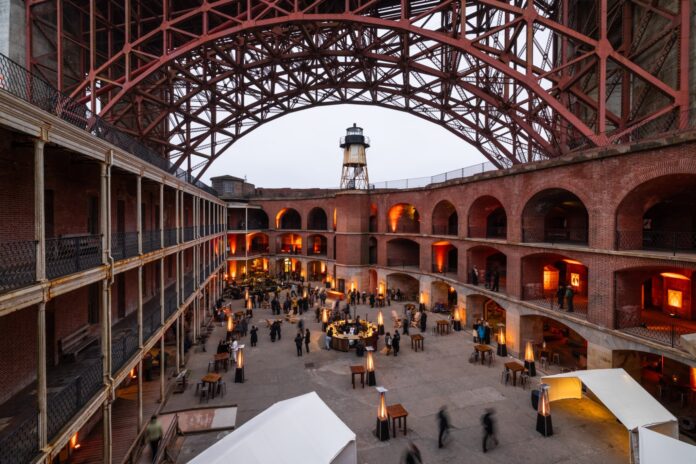If you’re an art curator who believes in the importance of location, location, location, Fort Point is impossible to pass up as a gallery. Despite being the Golden Gate Bridge’s senior by 80 years, the 45-feet-tall brick and mortar fort with seven-feet-thick walls seems constructed to fit snugly under the bridge’s south tower. But indeed, the Fort came first—and it’s now packed with art calling back to Californian history that serves as impressive counterpart to the soaring international orange span overhead.
The fort is currently providing a home for Black Gold: Stories Untold (runs through November 2), an exhibition that features 17 contemporary artists reflecting on the African Americans who lived in California from the Gold Rush through Reconstruction (1849–1877).
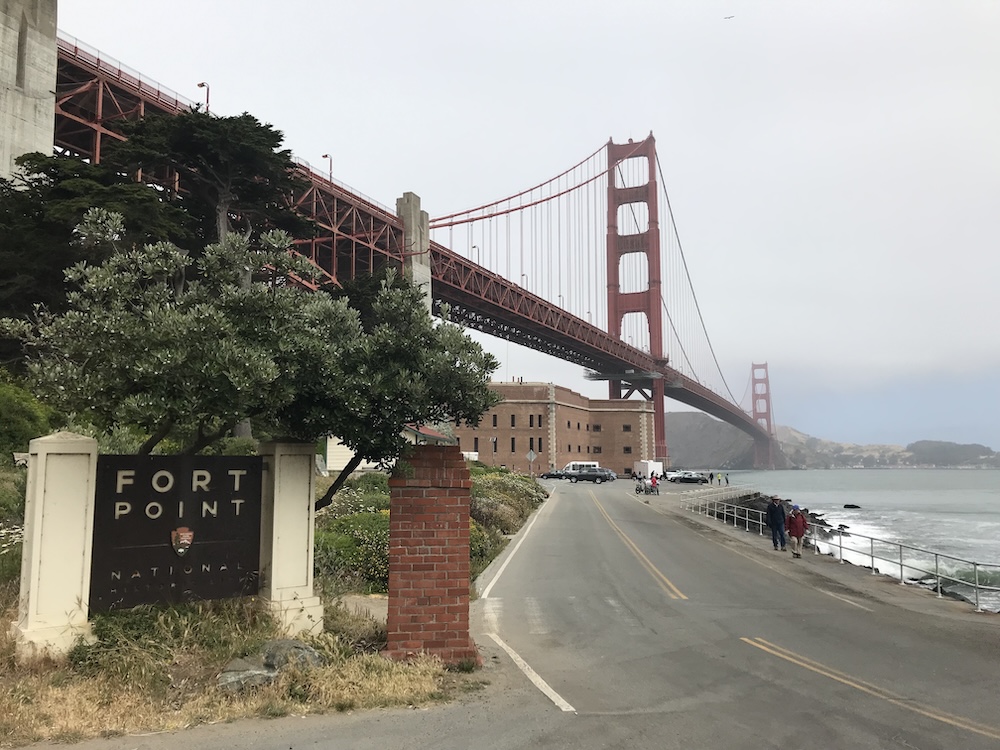
The show offers plenty of reasons for the thousands of tourists who walk over the fort every day to instead, walk in.
“I wanted to reactivate the fort,” founder, executive director, and chief curator of For-Site—an organization that coordinates art presentations on parklands, and oversaw the creation of Black Gold—Cheryl Haines explained on a recent media tour of the show. “Black Gold: Stories Untold is the first project since our Ai Wei Wei on Alcatraz exhibit that has addressed what individuals have done with their lives, the struggles, the resilience, and the triumphs.”
Housed in the former living quarters for soldiers on the third tier of the fort at the top of a hand-cut, granite spiral stairwell that is worth a visit on its own, “Black Magic” by Adam Davis, an on-going Civil War-era tintype photography project, is an interactive delight.
The series stems from Davis’ fascination with the Black stories that fill Californian history, including “Buffalo soldiers and their involvement in the Gold Rush,” he said. “Once the Gold Rush had come to an end, a lot of those gentlemen became some of the first national park rangers.”
As an educator, he understands that the ability for institutions to acknowledge “the more horrific parts of California’s history” is under fire like never before, making those conversations even more necessary. (The Black Gold exhibit was partially inspired by the ACLU’s Gold Chains: The Hidden History of Slavery in California educational campaign, which features this four-minute video debunking the idea that slavery did not exist in California.)
The installation’s comfy couch and interesting reading material provide stark contrast to the overall menace of a military fort—in the words of Davis, they communicate, “Come sit down. That’s the main thing. Listen to some beautiful music, read a book, hang out if you don’t want your photo made. That’s OK with me. As long as you make a space for yourself to rest.”
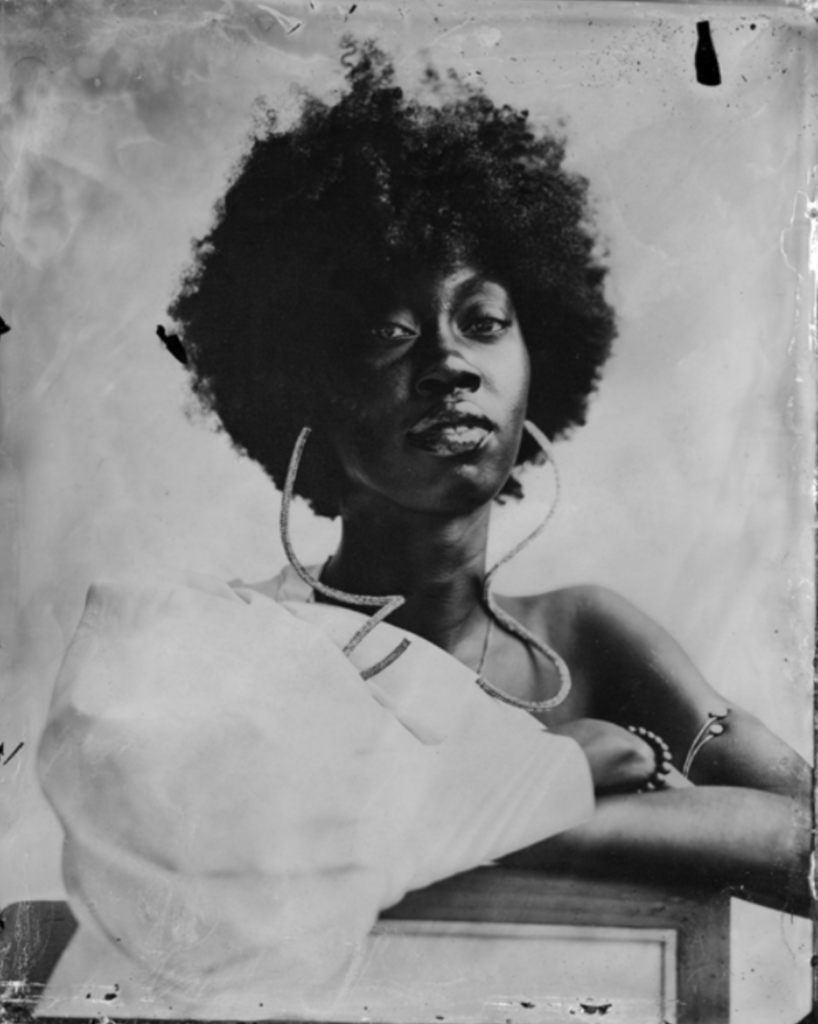
Cheryl Derricotte‘s installation on the fort’s second tier, “The Best Table in San Francisco,” is housed amid a long line of small officer’s quarters and barracks, cozier accommodations than Davis’, and the perfect environment for her art.
“This is more of a home setting,” said Derricotte, whose local works include “Freedom’s Threshold” at Millbrae Station, the first sculptural glass tribute to Harriet Tubman. “In terms of the staging itself, there was definitely an attention on period furniture to go with the installation, which I think was a really great touch, as well,” she continued.
The staging pays homage to the abolitionist and entrepreneur Mary Ellen Pleasant (1814-1904), whose tasteful, famed boarding houses offered vital social spaces for San Francisco’s Black community. For the Fort Point piece, Derricotte crafted glass dishes and napkins printed with eucalyptus leaves, while “my friend Jerry blew the whiskey sippers.” “21 Lessons,” a sound installation featuring quotes from Pleasant, as well as Akea Brionee’s piece “Mary Ellen Pleasant,” completes the atmosphere.
“I hope that when visitors listen to the sound piece, they really get a good sense of who she was as a person: a very committed abolitionist as well as a very committed feminist,” said Derricote.
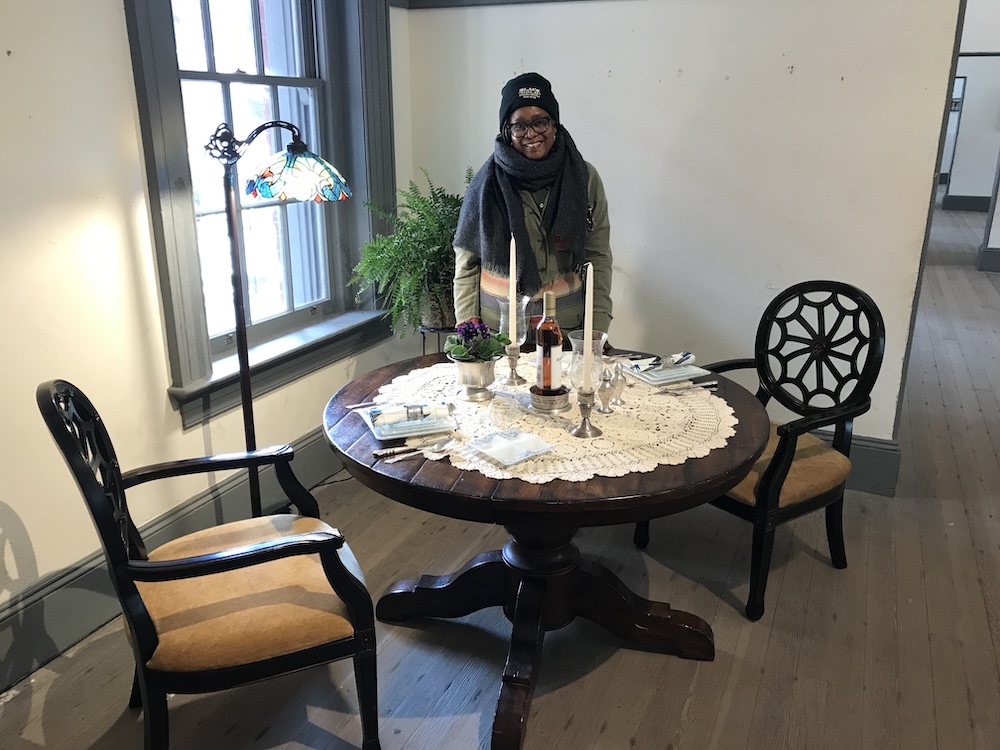
Speaking of his contribution to the exhibition, which is located two officer quarters down from Derricote’s dishes, Demetri Broxton is thrilled that the cold that breezes through the old fort does something other than just chill bones.
“I made the tassels a little extra long,” Broxton says of his fabric-based installation, “Eyes That Have Seen the Ocean Will Not Tremble at the Sight of the Lagoon.” “The wind is coming through and making them move. I’m excited to see that.” His screen-printed images on cotton fabric with beads and sequins pay homage to William T Shorey, the West Coast’s only African American whaler, also known as the Black Ahab. While Broxton wants the piece to educate, he wants visitors to “first be intrigued by the beauty of the work.”
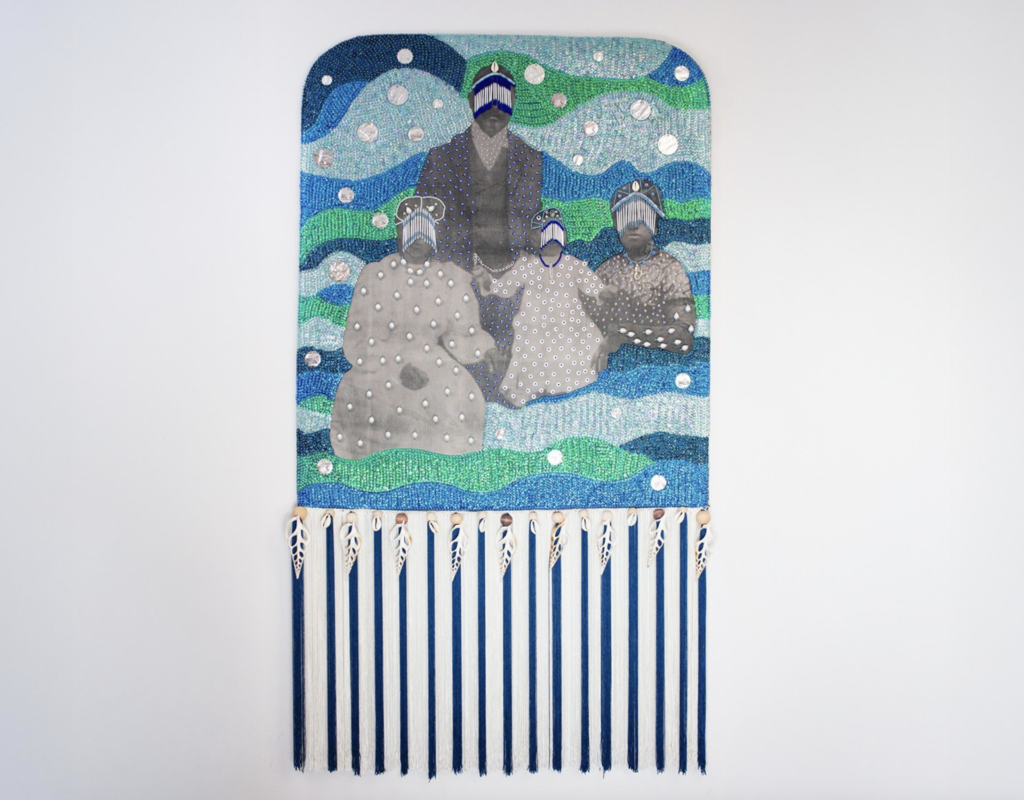
“Whenever you see something sparkly, it can spark something within you on another level, too. I want people to take the time to learn more about William T. Shorey and his daughter Victoria Ann Shorey, as well.”
The two-hour tour ends with much of the fort—and art—still unexplored. Luckily, Fort Point remains forever wedged under the bridge, waiting to share a California experience as unforgettable as walking over the Golden Gate Bridge.
BLACK GOLD: STORIES UNTOLD runs through November 2. Fort Point, SF. More info here.


